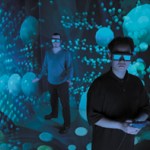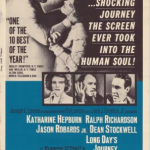education
Science Professor makes what I think is an entirely accurate assessment of the misery of many in the biomed academic world (emphasis original):
However, much of what I have learned, although fascinating, has been second-order compared to this:
People in the biomedical sciences seem to suffer a lot more than those of us in just about every other STEM [science, technology, engineering, and math] field.
...My data: 87% of my blog-related e-mail is from unhappy, bitter, troubled, distraught biomed grad students, postdocs, technicians, and early-career faculty. Others write to me with problems,…
Shambling, slowly disintegrating zombies aren't good for much - but maybe they're helpful for teaching neurobiology?
The Zombie Autopsies with Steven Schlozman, MD from GCP authors on Vimeo.
It is all about braaaaiiiiiinnns, after all. . . .
Read all about Zombie Autopsies here, or head to Amazon.
My son has been a Lego fanatic since he was about two years old. Our house is littered with those hard, plastic pieces on every floor, with various projects at different stages of completion - in some cases, merging into new hybrids. Legos are a great tool to encourage creativity. Who would have thought that they could be used to replicate an ancient Greek computer?
From Nature's video channel (if you have not already seen this amazing footage):
The Antikythera Mechanism is the oldest known scientific computer. Built in Greece around 100 BCE but lost for 2000 years, it was recovered from…
I can still remember how excited I got in junior and senior high school when it was science fair season. My friends and I would kick around ideas and make elaborate plans for what we were certain would be that year's shoo-in winner of the school fair. And once we captured the school's top prize, we would surely breeze through the city, county, and state prizes -- all the way to the nationals. But while we never made it to the nationals (nor to the state, county, or city competitions), we still couldn't wait to work on our science fair creations each year.
One year I used some little-known-at-…
Christopher Reiger has a great post at Hungry Hyaena about public communication strategies used by scientific advocacy groups, and where artists should adopt similar strategies:
Most Americans see science as extraneous esoterica crafted by white-coated wonks. Similarly, contemporary art is seen as the province of effete Onanists devoid of "family values." But the respective responses of the two realms to these ugly public perceptions is critically different. The scientific community has confronted the issue head-on, spilling ink, hosting panel discussions, and building programs. Whether or…
This is a glimpse into the future of 3D technology, utterly fascinating.
From PopSci:
A new, truly 360-degree 3-D display has been developed by researchers at Osaka University. The fog display is created by three projectors each beaming a different image into a column of thin fog, making the resulting image appear 3-dimensional from all angles. This technique means that viewers can physically walk around the display to see it from different vantage points without losing the 3-D effect.
My colleagues at Kean University have been using CAVE⢠Virtual Reality for their research and teaching,…
My Stealth Librarianship Manifesto post from last month continues to gather comments and page views, albeit at a slower rate than before. Of course, that's very gratifiying to see. If you haven't checked in on the post in a while, there are probably a couple of new comments with librarians' stories that you might want to check out.
To keep the idea going, I've decided to have occasional posts highlighting "stealthy librarian" posts and articles I see around the web. These are posts that highlight facutly/librarian collaboration in teaching or research, librarians integrated with business…
Is having a beer and sandwich at the local pub the best way to improve your brain awareness? At least in the city of Rehovot one evening last week, those eating and drinking in a few select establishments got to hear Weizmann Institute neurobiology graduate students give informal talks and demonstrations. The event was a part of Brain Awareness week, an annual, international affair. The aim is not really to make people more aware of their brains (or their brains more aware), but to promote brain research.
Some participated in an experiment in which they found that a smell can help imprint…
Vaccines are a tried and true mechanism for controlling disease, but they are not always a magic bullet. Researchers who study the spread of cholera in Haiti recently modeled what would happen if 150,000 vaccines were administered in Port-au-Prince. They concluded "the benefits would have been negligible." Liz Borkowski writes, "this intervention's small effectiveness is due partly to the slow pace at which full immunity builds up and to the likelihood that many vaccine recipients would've already built up natural immunity." A better way to control a water-borne disease like cholera is…
In his incredibly wonderful new book, On the Grid: A Plot of Land, An Average Neighborhood, and the Systems that Make Our World Work, Scott Huler gives us three essential take-aways:
Thank God for engineers
Get out your wallet
Let's learn to love our infrastructure. (p. 217-225)
In fact, not much more need really be said about the book. In essence it's a kind of tribute and salute to the women and men who keep our highly technoligized society functioning. The people we often forget about, whose glamour pales in comparison to movie stars, singers, politicians, even police and fire…
The federal government, including NIH, isn't exactly seen as a hotbed of artsy drama types. ("Faceless gray mega-bureaucracy" might be a more typical descriptor.) So I was tickled to learn that the National Institute on Drug Abuse is framing a series of continuing medical education (CME) courses about addiction around dramatic readings of Eugene O'Neill's Long Day's Journey Into Night. And no, we're not talking about cheesy readers' theater - they got Debra Winger and several Tony nominated stage actors to participate.
As a threshold matter, this is cool because it shows that NIH recognizes…
Jack Hassard wishes us well (and tasks us with being as provocative as we can) in his blog named after his book, The Art of Teaching Science (Oxford, 2004). Summarizing his own approach to science education, he credits Jacob Bronowski as his main inspiration, especially his belief that reasoning and imagination work closely together. Hassard quotes Bronowski at perhaps his most provocative: "You may have been told, you may still have the feeling that E=mc2 is not an imaginative statement. If so, you are mistaken."
Georgia Tech's Mark Guzdial, in his Computing Education blog, takes exception…
I guess it's not surprising, my dopamine is rising
And my glutamate receptors are all shot
I'd surely be bemoaning all the extra serotonin
But my judgement is impaired and my confidence is not
Allosteric modulation
No Long Term Potentiation
Hastens my inebriation
Give me a beer. . .
Physiology professors, I trust you know what to do with this holiday treasure by cadamole. Nothing makes neurobiology seem relevant like a beer.
In all of our organizations fostering innovation is an important goal. But how do you turn the innovation fawcett on? Somehow it seems so much easier to turn it off.
Of course, it's all about institutional culture. The way problems and solutions are framed. The way management/leadership/peer culture frames, encourages and rewards ideas.
Sometimes it just the way we ask questions about new ideas.
A nice articles from Tony Golsby-Smith at the Harvard Business Review blog site: Three Questions that Will Kill Innovation.
They're mostly aimed at commercial organizations but can easily be re-…
The 2011 NCAA Men's Basketball Championship officially started Tuesday, with the first of the "First Four" games, formerly known as the "play-in" game. It gets going in earnest today, though, which means that once this posts, I'll be shutting the Internet down and working like crazy for a few hours, so I can justify moving everything into the living room and working at a slower pace through a long, glorious afternoon of hoops overload. I may or may not post periodic updates on Twitter (mirrored to Facebook), so if you want live-ish sort-of-blogging follow me there.
As always, the run-up to…
Have you recently assessed how your students relate to science? I clearly remember when I was young watching old movies and television shows that depicted scientists as older men with glasses, crazy white hair, and lab coats. Have today's students' images of science changed? What about artists? Do they all have mustaches and paint on white canvases? These questions arose for me and my colleagues when working with upper elementary students on science, art, and literacy integration. When asked fourth grade students to illustrate and articulate their understanding of science and art, the results…

The Cyclotrope from tim Wheatley on Vimeo.
The cyclotrope is a cycle of 18 images that is spun at a certain speed so that the frame rate of the camera filming it gives the illusion of animation.
A humble suggestion to high school art/science/media teachers: if your curriculum is not already too constrained by standards and tests, there are near-infinite possibilities in a bicycle wheel, a camera, and art. . . think Muybridge.
Over at The Art of Science Learning, Peter Economy writes:
One of my great concerns for this country's future is the underperformance of our youth when it comes to achievement in math and science. In December 2010, the Organization for Economic Cooperation and Development (OECD) released the results of its 2009 Program for International Assessment (PISA) test, administered to thousands of 15-year-old students in 65 different countries around the world. The results were not good for the United States. In science, the U.S. ranked 23rd with a score of 502, well below Shanghai, China (575),…
By way of Observational Epidemiology, we find an interesting NY Times article by Michael Winerip describing a seventh grade teacher's experience with value added testing in New York City. I'll get to value added testing in a bit, but the story also highlights why we need more reporters who have backgrounds in math and science. Winerip:
On the surface the report seems straightforward. Ms. Isaacson's students had a prior proficiency score of 3.57. Her students were predicted to get a 3.69 -- based on the scores of comparable students around the city. Her students actually scored 3.63. So Ms.…


